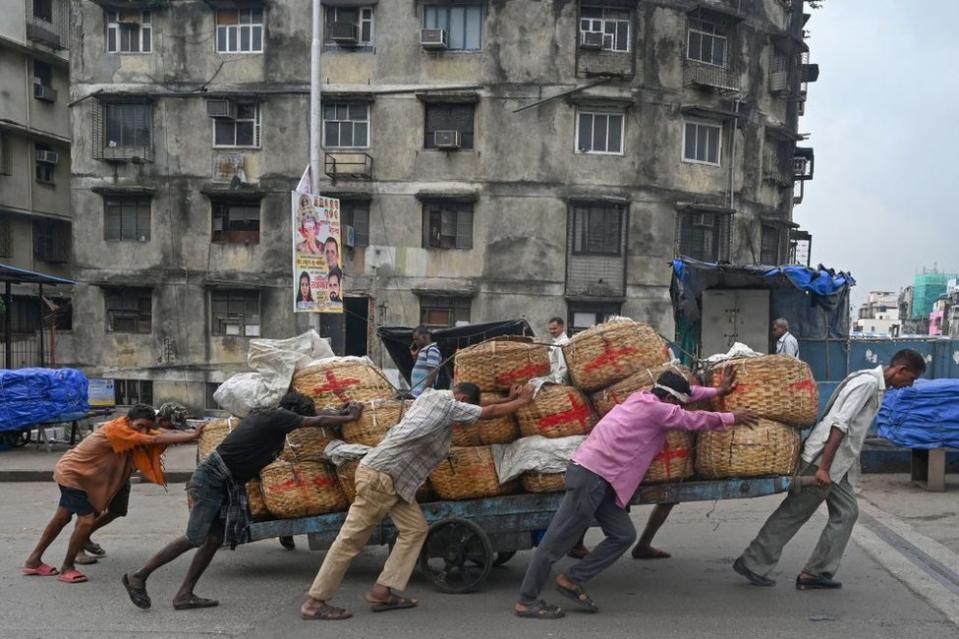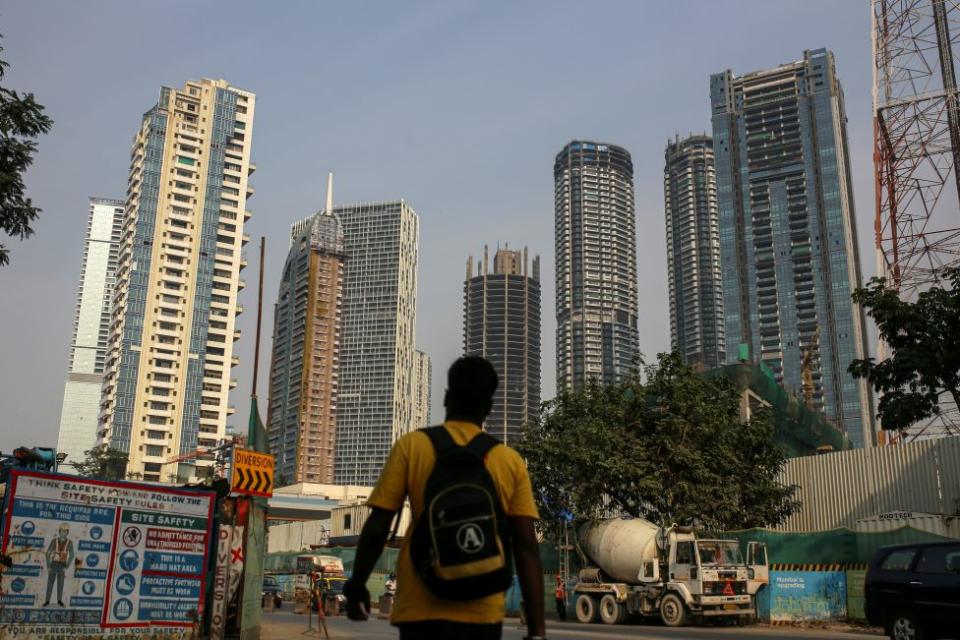What's behind a dramatic fall in Indian families' savings

For decades, India has been a nation of savers. They stash away a significant portion of their earnings for future security, often at the expense of current consumption.
But something seems to be amiss now. Recent data from the Reserve Bank of India says India's net household savings stood at a 47-year-old low. Household net savings are the total money and investments families have, like deposits, stocks and bonus, minus any money they owe, like loans and debt.
Savings shrank to 5.3% of the gross domestic product (GDP) in the financial year 2023, down from 7.3% in 2022. One economist called this fall "dramatic".
There has also been a sharp jump in household debt in the same period. Annual borrowings stood at 5.8% of GDP - the second-highest level after the 1970s.
As households increasingly rely on debt to fuel consumption, their savings inevitably erode. The more they borrow, they dedicate more of their income to repaying debt, leaving less for savings.
Nikhil Gupta, economist at Motilal Oswal Financial Services, says a significant portion of India's increasing household debt is made up of non-mortgage loans. Farm and business loans comprise over half of these loans. (An interesting aside: In 2022, non-mortgage debt in India matched Australia and Japan, and surpassed many other major nations, including the US and China.)

Mr Gupta also found that while borrowing for consumption - credit cards, consumer durables, weddings, health emergencies, for example - makes up less than 20% of total household debt, it was the fastest-growing segment.
So what does this trend of low savings and high debt tell us about India's economy, the fifth largest in the world? Do increased borrowing and spending point to optimism for the future, or do they warn of challenges such as declining incomes, inflation and economic stress?
"There is some amount of consumer confidence. There are many Indians who hope income growth will be strong enough in future. Or they just want to have a good life right now rather than think about what will happen to the future," Mr Gupta says.
"Is there a change in [the Indian] mindset about spending [more]? Maybe," he says, adding that it's not clear yet what is driving this.
What about borrowing money out of necessity or desperation, typically during times of financial hardship or crisis? Extended distress borrowing could easily lead to loan defaults. On the other hand, if the lenders are doing their homework, why would they continue to lend to non-creditworthy borrowers in the throes of a financial crisis?

A key problem, according to Mr Gupta, is the lack of granular detail in the official data on the borrowers. What kind of jobs they do? How many people have taken how many loans? (One borrower can take multiple loans.) What are they using the loans for? What is their repayment history?
Some clues are available. Mr Gupta and fellow economist Tanisha Ladha at Motilal Oswal have found that the bulk of household debt growth in the past decade was driven by 'credit widening' - an increase in the number of borrowers - rather than 'credit deepening' or higher loans per borrower. Having more people borrowing is preferable to having each borrower take out larger loans.
They also found that Indian households have a debt service ratio (DSR) - the share of income used to service loans - of approximately 12%, similar to Nordic countries. This ratio is higher than that of China, France, the UK, and the US, all of which have higher household debt levels. The difference is due to higher interest rates and shorter loan tenures in India, resulting in a relatively higher DSR despite lower debt-to-income ratios.
In September, India's finance ministry dismissed fears about reducing savings and increasing borrowings, saying people were taking advantage of low interest rates after the pandemic to buy cars, education loans and homes.
Also, it said, more people were borrowing to buy assets like home and vehicles which is "not a sign of distress but of confidence in the future employment and income prospects".
Zico Dasgupta and Srinivas Raghavendra of Azim Premji University, however, sound a note of caution. The decline in savings coupled with the increase in debt prompted concerns regarding "debt repayment and financial fragility", the two economists wrote in The Hindu.
Others like economist Rathin Roy worry about a growing reliance on borrowing in a nation with the lowest per capita income among G20 countries. The government borrows to fund basic services and subsidies, while households borrow to consume, he noted in Business Standard. This reduces the already "declining flow of financial savings" and increases the cost of borrowing.
Mr Gupta and Ms Ladha believe that the current high level of borrowing in a year does not endanger India's financial or macroeconomic stability. But there are concerns about its sustainability if this trend persists.
"Consumer India's consumption is located at the crossroads of high aspiration for a better life, woefully inadequate quality and quantity of public goods and amenities and modest incomes which are also unstable," writes Rama Bijapurkar, a business consultant, in her new book Lilliput Land.
In other words, the Indian consumer is engaged in a deft balancing act.

 Yahoo Finance
Yahoo Finance 